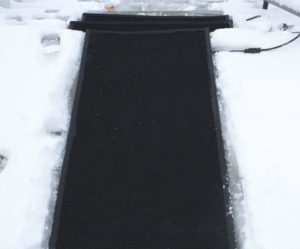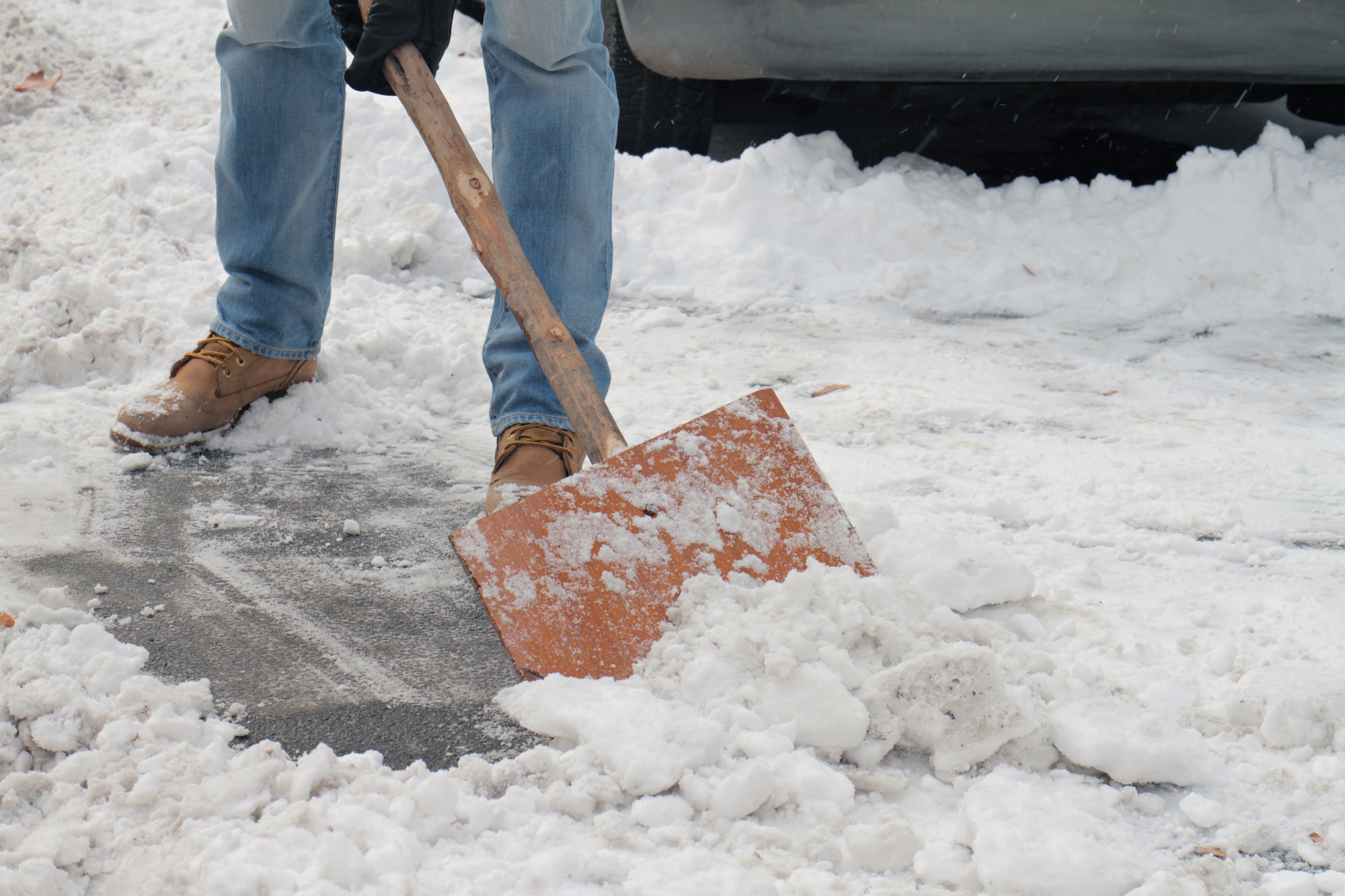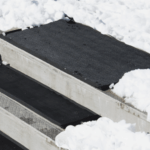
How to Melt Snow Without Salt: Ice Melt Alternatives
Harsh salts damage concrete and the environment. Fortunately, there are several natural snow and ice melt alternatives you can use this winter instead.
Every winter, especially after a few good snow storms, we tend to ask ourselves those life-changing questions:
How do I melt snow and ice without shoveling?
How do I melt ice and snow without salt?
Are there any realistic alternatives to shoveling and that annoying salt?
Well, here are your answers.
Tired of shoveling snow and ice all winter long? There’s an easier way to keep your walkways, driveways, and outdoor spaces clear without the hassle. Our heated ground thawing blankets provide a reliable solution for melting snow and ice, preventing buildup, and keeping surfaces safe. Simply lay them down, plug them in, and let the consistent warmth do the work for you. No more back-breaking shoveling or dangerous icy conditions—just effortless snow and ice melting all season long. Stay warm indoors while your heated blankets handle winter’s worst!
The Problems with Calcium Chloride Snow and Ice Melt (Rock Salt)
While snow and ice melting salt is an easy way to eliminate dangerously slippery driveways, it poses notable risks. It is not biodegradable, meaning it sticks around long after the snow is gone. It can negatively impact soil, vegetation, groundwater, surface water, and even air.
- Snow and Ice melt can be significantly detrimental to concrete. The harsh salts break chemical bonds that keep concrete strong. This results in damaged concrete on driveways that will require costly repair and replacement much earlier.
- Snow and ice-melting salts can be dangerous to pets or young children. When ingested, the salts can cause painful stomach distress. Snow melt can dry out and crack your pets’ paws, putting them at risk for infection.
- Snow melt can cause serious damage to your yard and landscaping, as well as the environment. As ice melts, the runoff containing harsh salts can kill grass and other plants.
- The salts may also run off into your local water system, which can compromise the area’s water quality.
Luckily, many safe alternatives exist for melting away that pesky snow. These options are more environmentally friendly and will protect little ones (both human and animal) who come into contact with them.
Snow and Ice Melt Alternatives
- Coffee Grounds
- Sugar Beet Juice
- Vinegar
- Homemade Solution
- Baking Soda
- Wood Ash
- Organic, Salt-Free De-Icer
- Alfalfa Meal
- Ground Thawing and Ice ice-melting mats
Let’s take a closer look at each of these snow and ice melt alternatives:
Coffee Grounds
Have a coffee maker in your kitchen? Instead of throwing away the leftover coffee grounds, apply them to your driveway after shoveling. This helps to melt ice quickly due to the acidity within the coffee grounds. This will also add some needed grit for those walking on the driveway, which will help prevent slips and falls. Because the grounds are a dark color, they also naturally attract more sunlight and warmth.
Sugar Beet Juice
Beet juice works by lowering the melting point of ice and snow. Because it’s a liquid, it requires no cleanup. It’s 100% natural and poses absolutely no risk to concrete, pets, or the environment. Additionally, beet juice is one of the few ice-melting options that works even in sub-zero temperatures! Admittedly, it’s not the cheapest option available, but it is very kind on the environment, which is a huge bonus.
Vinegar
Instead of pouring straight vinegar on your driveway, it’s a good idea to mix equal parts water and vinegar in a large bucket and then pour it on the snow-covered area. This solution will not be the strongest snow and ice melt choice, but it is nonetheless effective. Just make sure that you don’t allow the liquid to freeze again. Remove any remaining ice or water puddles with a shovel or a push broom.
Homemade Solution
Why not try creating your own DIY solution made from a few common, inexpensive household ingredients? Here’s all you’ll need:
- A Bucket
- Half-gallon of Hot Water
- Six Drops of Dish Soap
- ¼ Cup of Rubbing Alcohol
Simply mix it all together and pour your homemade ice melt solution onto the driveway. You can also put the solution into a spray bottle and apply it that way if you only have a small area you want to treat, such as a small porch.
Baking Soda
If you’re in a pinch, you can even use baking soda as ice melts! This is one many people haven’t considered, but because it’s a kind of salt, it will lower the temperature of the ice, slowly turning it to water. It is also much softer on the concrete than the corrosive properties of the traditional calcium chloride salt.
Wood Ash
Wood ash is a good snow or ice-melting solution if you have a wood-fueled fireplace. Instead of throwing the wood ash away, simply gather it and use it as a slow-acting melt solution. It contains potassium, which is why it works. As with the coffee grounds, the dark color attracts more sunlight, which enhances its melting ability.
Organic, Salt-Free De-Icer
This option is a more expensive alternative to traditional snow melt. However, it offers all the same convenience as calcium chloride ice melt without the damaging risks to your property and family.
Alfalfa Meal
Alfalfa meal is commonly used as fertilizer. It contains nitrogen, but not enough to risk harm to plants or your local water system. Alfalfa meal has a dry, grainy texture that can provide traction while it goes to work melting snow and ice.
A Word About Sand
Many people believe that sand can effectively melt snow like ice melts. However, this isn’t really the case. The reason people often suggest sprinkling sand is to provide greater traction after a great snowfall. This reduces the chance of a major injury due to a fall, keeping you safe while you’re out shoveling.
However, the sand will likely melt the snow to a small degree, although it may need to be reapplied several times. You can use birdseed or kitty litter for better traction as well, although they won’t offer much in terms of actually melting the snow.
Snow and Ice Melting Mats
And now, on to our favorite way to melt snow and ice effortlessly: Heated Ground Thawing Blankets from Powerblanket!

No more shoveling! Ever! (Now that sounds nice!)
Did you know heated blankets for snow and ice removal even existed? If not, you’re not alone! But they’re quickly becoming the go-to alternative to back-breaking shoveling.
Powerblanket’s Ground Thawing Heated Blankets eliminate the need for labor-intensive snow and ice removal. They provide reliable warmth to keep pathways, driveways, and outdoor surfaces clear while giving you peace of mind all winter long. Plus, they help prevent dangerous ice buildup, keeping you safe with every step outside.
These heated blankets are incredibly easy to use—simply lay them out once and leave them in place all season. When the snow starts falling, just plug them in, and they’ll take care of the rest! It doesn’t get much easier than that.
Powerblanket offers many sizes of ground-thawing heated blankets, with customizable options to fit your exact needs. They can even be linked together to cover porches, walkways, driveways, and stairs of any size or shape.
Ready for an easier winter season?
Learn more about our Ground Thawing Heated Blankets. Give our snow removal experts a call today at 866.945.4203.
Frequently Asked Questions
How do you melt ice without ice melts?
To melt ice without traditional ice melts, consider using snow melting mats, coffee grounds, sugar beet juice, vinegar, or a homemade solution with dish soap and rubbing alcohol for effective and eco-friendly results.
Does Epsom salt melt ice and snow?
Epsom salt can melt ice and snow at temperatures above 20°F (-6°C), but it may require more frequent application compared to other alternatives like coffee grounds or beet juice.
How to manage icy roads without salt?
Managing icy roads without salt can be achieved using organic methods such as beet juice, vinegar, or snow melting mats, which provide effective de-icing while being environmentally friendly.
What is the most environmentally friendly ice melt?
Calcium magnesium acetate (CMA) is considered one of the most environmentally friendly ice melts, as it is less harmful to plants and animals compared to traditional salts.
If you're looking for effective snow and ice-melting solutions, try ground thawing heated blankets for a reliable and efficient alternative.









